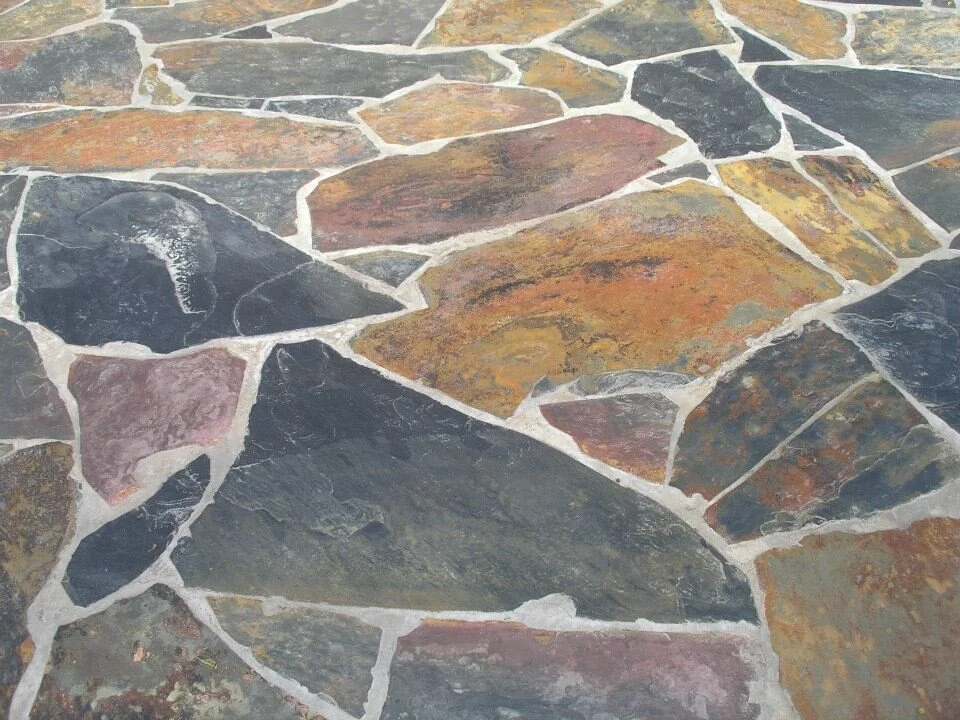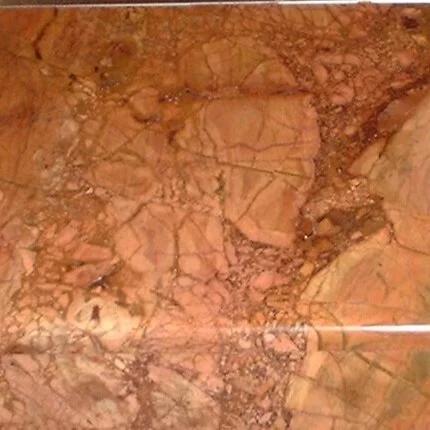
Categorically, there are three Geological types of stone.
Slate
Sedimentary:
The most common types of Sedimentary Stone we work on are Limestone, Slate, Travertine, Sandstone, Flagstone and many subclasses therein. Many sedimentary rocks are relatively easy to identify because the bits and pieces can be seen as separate from one another.
Chemical Sedimentary Rock: Limestone is made from tons of seashells lying broken and fragmented upon one another then the precipitation of calcium carbonate through water bonds them into a solid stone.
Clastic Sedimentary Rocks: Slate and Quartzite have obvious layering from being at the bottom of a river with an ebb and flow of different seasons carrying different minerals from upstream.
Evaporites: Travertine is made, as you can see, if you’ve ever looked at it unfilled or at the back of the tile or slab, from the evaporation of mineral rich water coming up to the surface, through the holes in the stone, from subterranean hot spots.
Marble
Metamorphic:
The most common types of Metamorphic Stone we work on are Marble, Serpentine, and Onyx. Marble is normally a Limestone which has undergone a change in its crystalline structure (or recrystallization) via extreme heat and pressure, usually where two tectonic plates have converged and the lower one, with all its seashells and the like, after floating in a lake of magma under a thick layer of whatever plate has forced it under, breaks through the surface and forms a mountain somewhere inland. These imperfect forces tend to cause banding where the folds occur and where there are inconsistent layers of preexisting different minerals. Onyx is normally a Travertine which has undergone a similar transformation.
Granite
Igneous:
The most common type of Igneous Stone we work with is Granite which is a natural glass. Granite is formed when magma or molten lava cools and hardens. There are many different types of granite found all over the world, with different colors and crystals, depending on what material is available for the melting process. When these natural minerals melt, they absorb feldspar and silica which becomes extraordinarily hard and is extremely resistant to most acids



